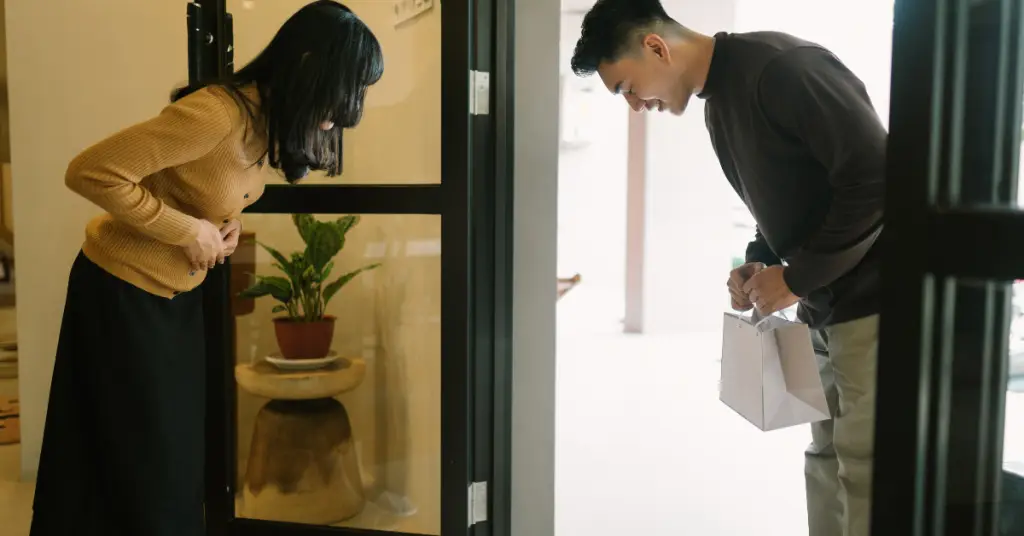Ever wondered why your Japanese friend bowed three times during your last video call, or why that business meeting in Tokyo felt like a carefully choreographed dance? Welcome to the fascinating world of Japanese etiquette! Whether you’re planning your first trip to Japan or you’re a local looking to deepen your understanding, this guide will help you master the art of Japanese politeness without breaking a sweat.

The Heart of Japanese Etiquette: More Than Just Good Manners
Think of Japanese etiquette as the social operating system that keeps everything running smoothly. It’s not about rigid rules – it’s about creating harmony and showing respect in every interaction. As explained in this comprehensive guide to Japanese Culture and Traditions, the Japanese concept of “omotenashi” (selfless hospitality) isn’t just a buzzword; it’s the secret ingredient that makes Japan’s social fabric so unique.
Mastering the Bow: Your New Social Superpower
Remember that awkward moment when you weren’t sure whether to bow or shake hands? Here’s the scoop: bowing in Japan is like a Swiss Army knife of social gestures. It can say “hello,” “thank you,” “I’m sorry,” or “that was the best ramen I’ve ever had!”
Quick Bow Guide:
- Casual greeting: 15-degree bow (think of checking your shoes)
- Business respect: 30-degree bow (like touching your toes)
- Deep apology: 45-degree bow (you really messed up!)
Pro tip: Keep your back straight and your hands at your sides. And yes, it’s totally okay to combine a bow with a handshake when meeting international friends!
Dining Etiquette: Your Table Manner Survival Guide
Ever sat down at a Japanese restaurant and felt like everyone else got the secret rulebook? Let’s change that!
Essential Do’s and Don’ts:
- DO say “Itadakimasu” before eating (think of it as a foodie’s “thank you”)
- DON’T stick your chopsticks vertically in rice (this is only done at funerals)
- DO slurp your noodles (it’s not rude, it’s a compliment!)
- DON’T pour your own drink (take care of others, and they’ll take care of you)
The Gift-Giving Game: Making Hearts Happy
In Japan, gift-giving isn’t just for birthdays and holidays – it’s an art form! The concept of “omiyage” (souvenirs) takes gift-giving to the next level.
Smart Gift Tips:
- Bring regional specialties from your hometown
- Always wrap gifts beautifully (many stores offer free wrapping)
- Avoid anything in sets of four (it’s considered unlucky)
- Present and receive gifts with both hands
Practical Tips for Real-Life Situations
On the Train:
- Phone calls are a no-no
- Priority seats are for those who need them
- Keep your voice down (the “library voice” rule)
At the Office:
- Arrive 5 minutes early (on time is late!)
- Business cards deserve special attention
- After-work socializing is important
Common Questions Answered
Q: Should I bow to everyone I meet? A: A slight head nod is fine for casual situations. Save deeper bows for formal occasions or when showing gratitude.
Q: What if I make a mistake? A: Don’t worry too much! According to the Japan National Tourism Organization’s etiquette guide, Japanese people are generally understanding of foreigners learning their customs. A sincere apology goes a long way.
Q: Is it okay to tip? A: Generally, no. Great service is the standard in Japan, and tipping might actually cause confusion.
